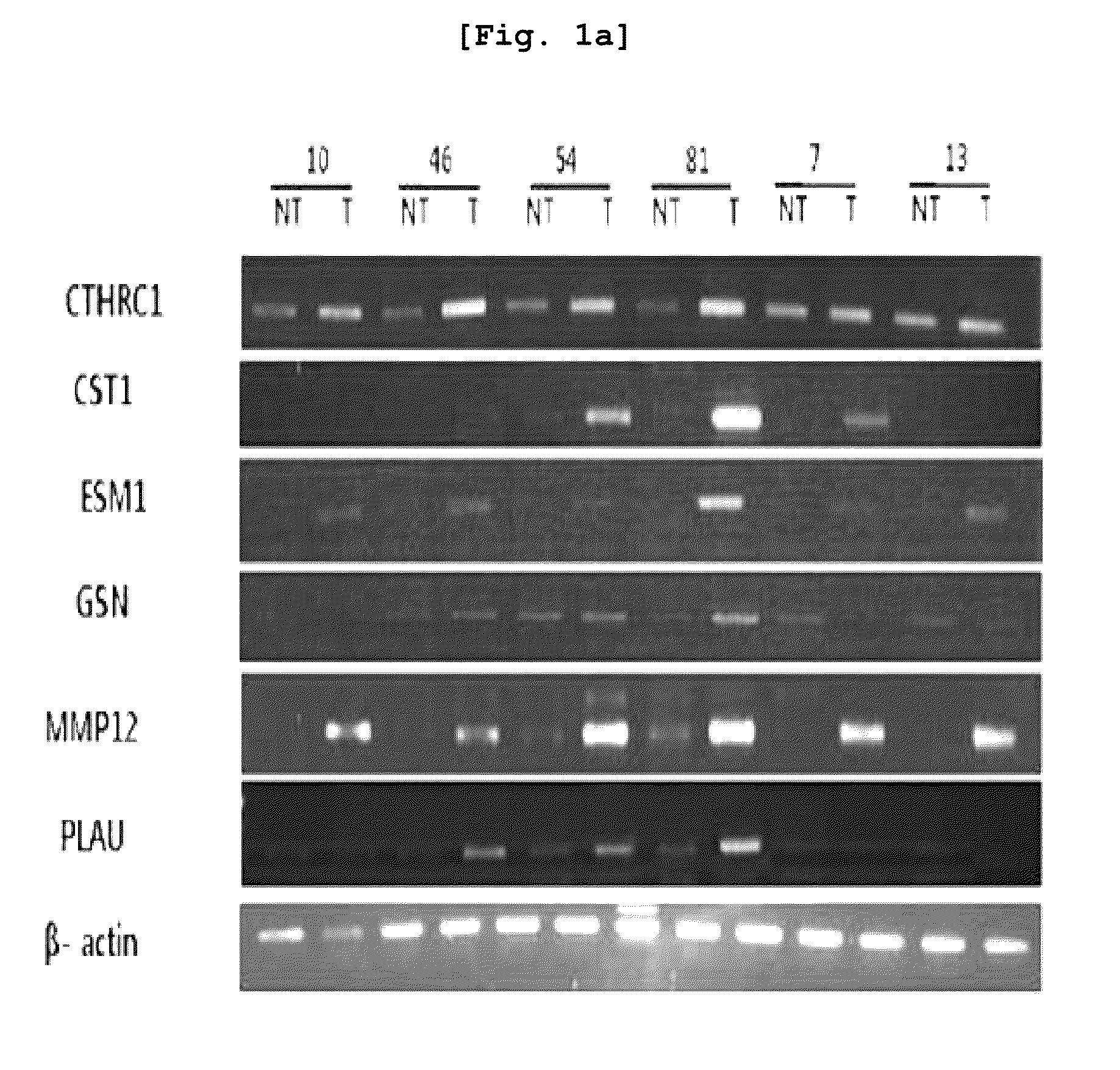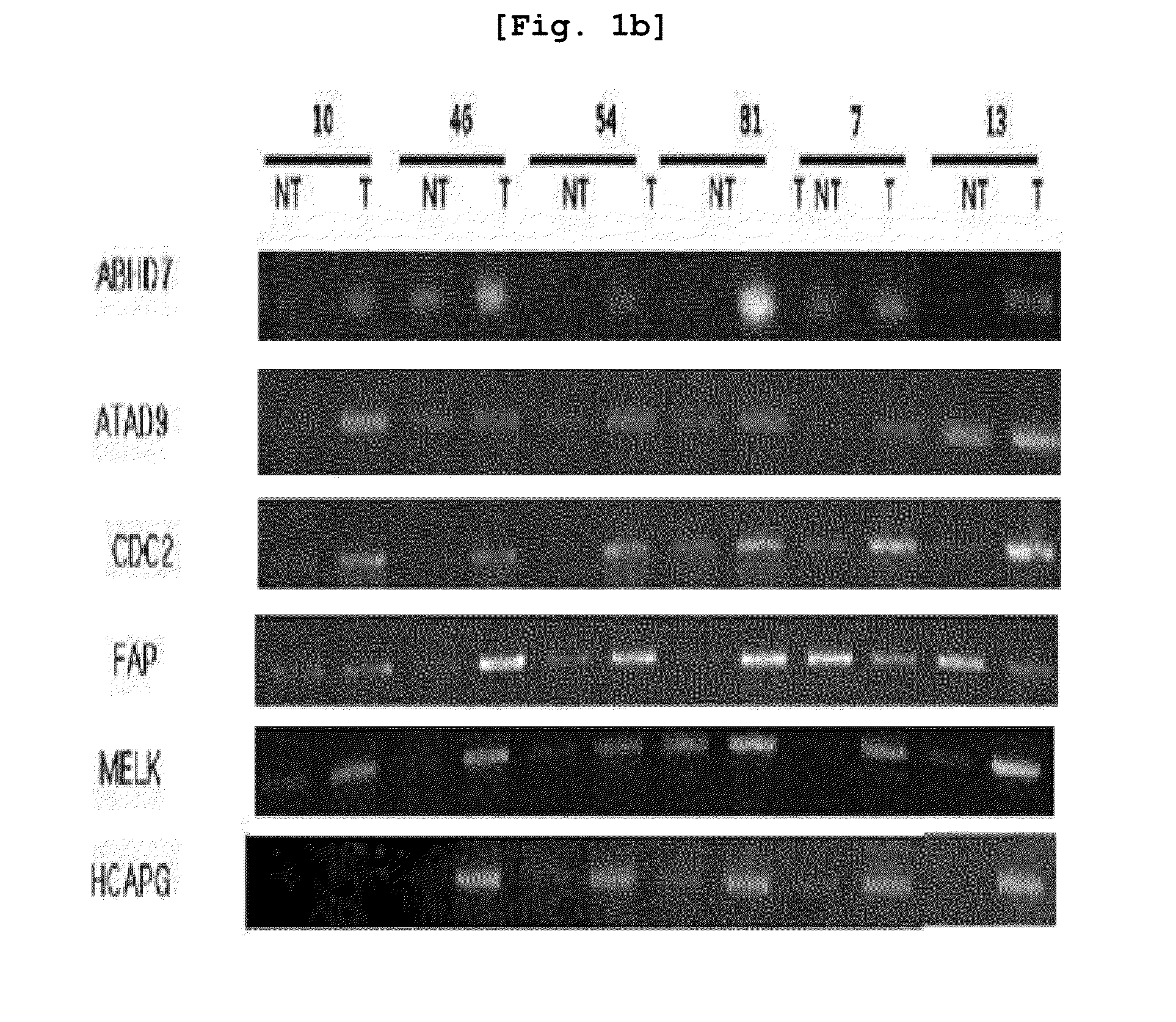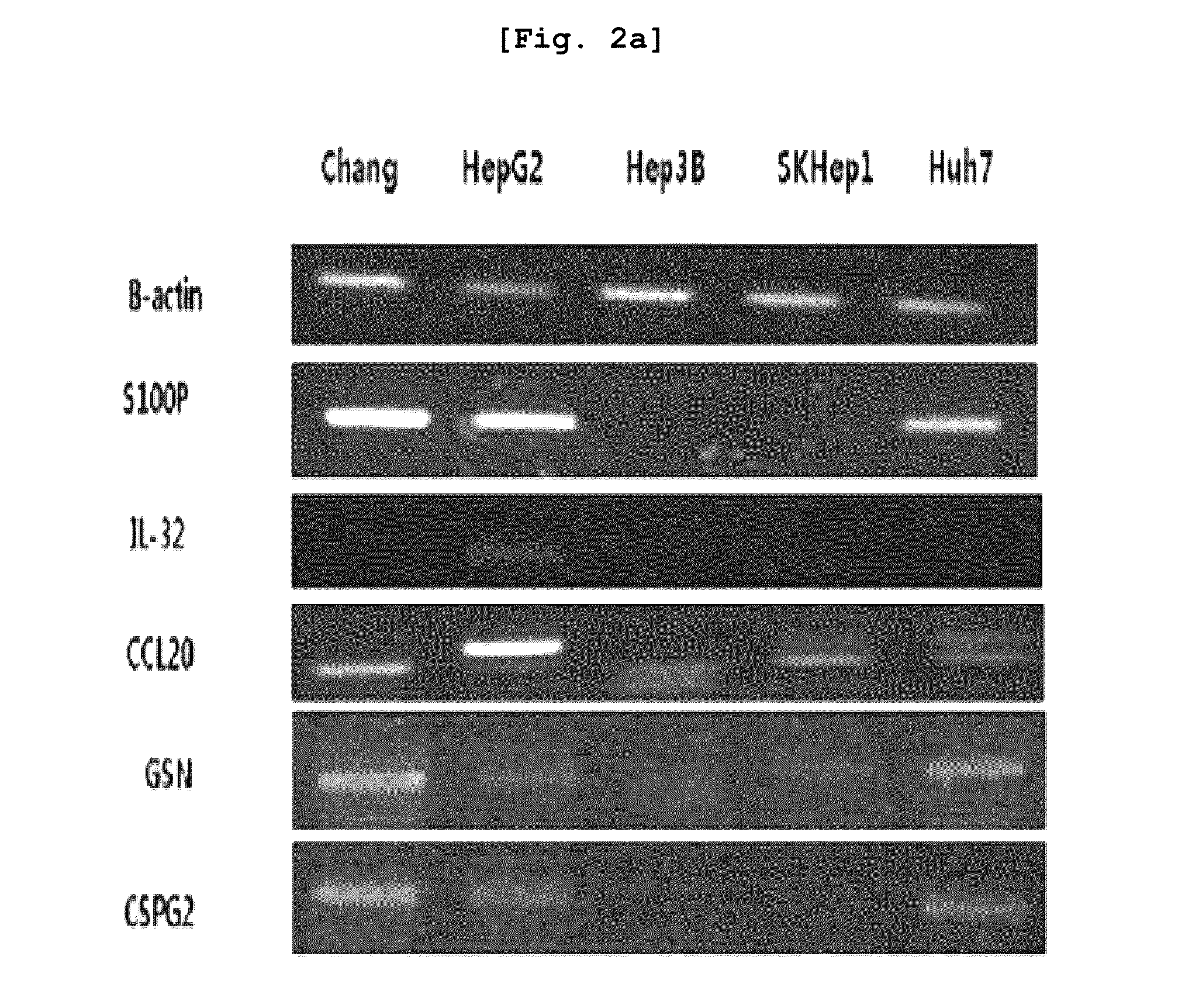Novel biomarker for liver cancer and applications for same
a biomarker and liver cancer technology, applied in the field of liver cancer biomarkers, can solve the problems of insufficient specificity and sensitivity ideals of markers, excessive false positives of afp tests, and limited use of biomarkers, so as to improve accuracy and reliability.
- Summary
- Abstract
- Description
- Claims
- Application Information
AI Technical Summary
Benefits of technology
Problems solved by technology
Method used
Image
Examples
example 1
Discovery of Genes with Excessive Expression of Liver Cancer Using DNA Chip
[0112]For cDNA microarray experiment, primary hepatocellular carcinoma (HCC) tissues were obtained from forty liver cancer patients at Seoul St. Mary's Hospital and Chonbuk National University Hospital. The normal liver tissues were obtained from patients other than liver cancer patients at Seoul St. Mary's Hospital. The tissue samples were frozen in liquid nitrogen. The total RNA was isolated using RNeasy mini kit (Qiagen, Hilden, Germany). Differences in gene expression were then investigated based on the cancer tissue of the 40 liver cancer patients and the neighboring tissues using cDNA microarrayer.
example 2
Isolation of mRNA from Tissues and Cells
[0113]For RT-PCR, normal liver cells and liver cancer cells were collected from twenty liver cancer patients and mRNA was isolated from total forty tissues.
[0114]First, upon extracting the tissues with surgical incision, blood was immediately removed in sterilized in PBS, and frozen in liquid nitrogen. After that, the total mRNA was isolated by Guanidinium method and single-step RNA isolation was carried out. The isolated total mRNA was quantified using spectrophotometer, and reserved in −70 C refrigerator for later use.
[0115]Total five liver cancer lines were selected (Chang, HepG2, Hep3B, SKHep1, Huh7) and distributed from Korean Cell Line Bank (KCLB) with address at 28, Yeongun-dong, Jongno-gu, Seoul, Republic of Korea.
[0116]10% fetal bovine serum (FBS, Hyclon) and penicillin streptomycin (1 mg / ml, Sigma) were respectively added to optimum culture medium, i.e., DMEM (Invitrogen) or RPMI1640 (Invitrogen), cultured for 5 to 6 days, and total ...
example 3
Comparison of Gene Expression Using RT-PCR
[0117]RT-PCR was carried out regarding the liver cancer-specific over-expression genes which were selected based on the result of Example 1.
[0118]For the purpose of preparing primers, the entire DNA sequences of the respective genes were obtained from core nucleotide (http: / / www.ncbi.nlm.nih.gov.) of NCBI, and the primer sequences of these genes were designed through Prmer3 program. Using the primers designed as explained above, PCR (polymerase chain reaction) was carried out to thereby investigate the levels of expression of the respective genes. The respective primer sequences are illustrated in Table 1 provided above.
[0119]For RT-PCR, cDNA was prepared, from the mRNA extracted from the tissues and cell lines of Example 2 and through reverse transcription (RT) reaction. The cDNA was prepared using cDNA Synthesis kit (AccuAcript High Fidelity 1st Stand cDNA Synthesis Kit, STRATAGENE).
[0120]Using the prepared cDNA and primers, RT-PCR (1 cycl...
PUM
 Login to View More
Login to View More Abstract
Description
Claims
Application Information
 Login to View More
Login to View More - R&D
- Intellectual Property
- Life Sciences
- Materials
- Tech Scout
- Unparalleled Data Quality
- Higher Quality Content
- 60% Fewer Hallucinations
Browse by: Latest US Patents, China's latest patents, Technical Efficacy Thesaurus, Application Domain, Technology Topic, Popular Technical Reports.
© 2025 PatSnap. All rights reserved.Legal|Privacy policy|Modern Slavery Act Transparency Statement|Sitemap|About US| Contact US: help@patsnap.com



